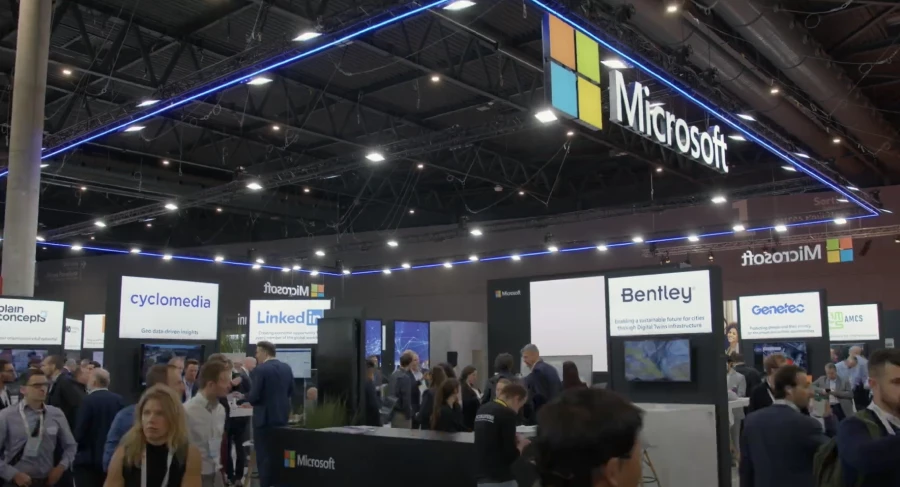Notizie per Categorie
Articoli Recenti
- Explore practical best practices to secure your data with Microsoft Purview 25 Aprile 2025
- New whitepaper outlines the taxonomy of failure modes in AI agents 24 Aprile 2025
- Understanding the threat landscape for Kubernetes and containerized assets 23 Aprile 2025
- [Launched] Generally Available: Instance Mix for Virtual Machine Scale Sets 22 Aprile 2025
- Microsoft’s AI vision shines at MWC 2025 in Barcelona 22 Aprile 2025
- [Launched] Generally Available: Announcing the Next generation Azure Data Box Devices 22 Aprile 2025
- [Launched] Generally Available: Cross-Region Data Transfer Capability in Azure Data Box Devices 21 Aprile 2025
- [Launched] Generally Available: Azure Ultra Disk Storage is now available in Spain Central 21 Aprile 2025
- [Launched] Generally Available: Azure Firewall resource specific log tables get Azure Monitor Basic plan support 21 Aprile 2025
- Hannover Messe 2025: Microsoft puts industrial AI to work 21 Aprile 2025
The future of urban innovation revealed at Smart City Expo World Congress 2023
As I arrived in Barcelona, Spain for the Smart City Expo World Congress 2023 conference on November 7, 2023, I expected that AI and cloud computing would be top of mind for many of the 25,000 attendees. What I hadn’t anticipated was the degree to which government leaders had moved beyond cautious curiosity and were now anxious to act on it. The energy and momentum were unlike any I’ve ever seen.
Microsoft was proud to be a global sponsor at this year’s conference, the world’s biggest and most influential event on urban innovation. Over a period of three days, we met with several leaders and representatives, along with people from research and academia, technology companies, media, and more.
The goal was to explore innovative solutions and strategies needed to transform cities into more sustainable, efficient, and livable spaces—which is essentially what we in Microsoft for Government aim to address from a technology perspective.

Trends in urban innovation
The United Nations predicts that two-thirds of the world’s population will live in cities by 2050.1 It is expected that more new cities will be built in the next 40 years than in all of human history preceding it. The future of humanity is increasingly urban, and the key to solving many of the wide-ranging challenges—from efficiency and sustainability to security and inclusion—lies in technology.
At this year’s event, there was an overwhelming interest in generative AI, particularly in exploring how to apply the technology to make both near-term and long-term impacts on the programs, operations, and investments of cities of all sizes and geographies. Here are three important trends that we see municipal governments focusing on today:
- Data and AI are transforming service delivery and operations.
The use of AI, specifically generative AI, helps city governments rapidly derive insights from their data in ways that cut through bureaucracy and provide services that people respond to positively. Chatbots and copilots can be game changers in delivering important information, as the City of Kelowna in Canada has demonstrated with the development of new bot capabilities for a 24-hour help line to make it easier for people to access services and understand permitting and regulations. Elsewhere, the Aberdeen City Council in Scotland has built a new platform to collect data and to provide data transparency to its workers, which has improved its average handling time for a single case by 218 minutes and saved more than 2 million pounds annually on data collection. - Sustainability and climate resilience are served by informed decision making and energy efficiency.
Cities are increasingly challenged by the demands to meet their environmental commitments around carbon emissions, water usage, and waste management. To become more resilient in the face of climate change, AI solutions can help leaders make more informed decisions by helping them get the most out of their vast and wide-ranging stores of data. This can assist in everything from navigating complex regulations, designing carbon-neutral plans, and anticipating the impacts of climate change to build more resilient infrastructure.One example of this is a digital smart city solution built by the Lillestrøm municipality to remotely monitor hydroelectric utilities. The solution not only helps the municipality provide clean water using fewer resources, but also provides data to predict and provide early warning against flooding.
- Technology innovation is better through partnerships.
In exploring innovation around AI and cloud computing, city governments realize that there is no one-size-fits-all approach. No single vendor or solution provider is capable of meeting any government’s needs, which is why it is important to take a broad view of providers and make decisions based on proven quality and capabilities. On one hand, you need solutions that can fully meet the uniquely stringent requirements of trust, scale, and security that government computing demands. On the other, you need a solution provider who understands the landscape of legal, social, and sovereignty considerations which are unique to the municipality.
Beyond offering an industry-leading cloud and AI platform, Microsoft is differentiated by our robust global partner ecosystem, which is essential to address the myriad of challenges facing cities. Our partners are central to how we meet the needs of cities, and they provide the critical link in enabling public and private partnerships that will deliver successful outcomes in both the near- and long-term.

Microsoft for Government
Enable thriving communities with a foundation of security, privacy, and trust
The road ahead for smart cities
For cities and government agencies looking to take advantage of cloud, data, and AI, the first step is to get your data in order. This means modernizing your environment by migrating to a trusted cloud platform such as Microsoft Azure, and adopting an analytics platform such as Microsoft Fabric that unifies data and readies it for large language models and the AI solutions they can enable. Then, you’ll be able to take full advantage of AI with tools like Copilot for Microsoft 365 and custom innovations built on Microsoft Azure OpenAI Service.
Microsoft is excited to partner with cities and other government organizations to chart a path forward to help solve society’s biggest challenges. To learn more about how we can help in your urban innovation journey, visit the Microsoft for Government website, read our Microsoft for Government e-book, or get in touch with your Microsoft sales representative.
The post The future of urban innovation revealed at Smart City Expo World Congress 2023 appeared first on Microsoft Industry Blogs.
Source: Microsoft Industry Blog
